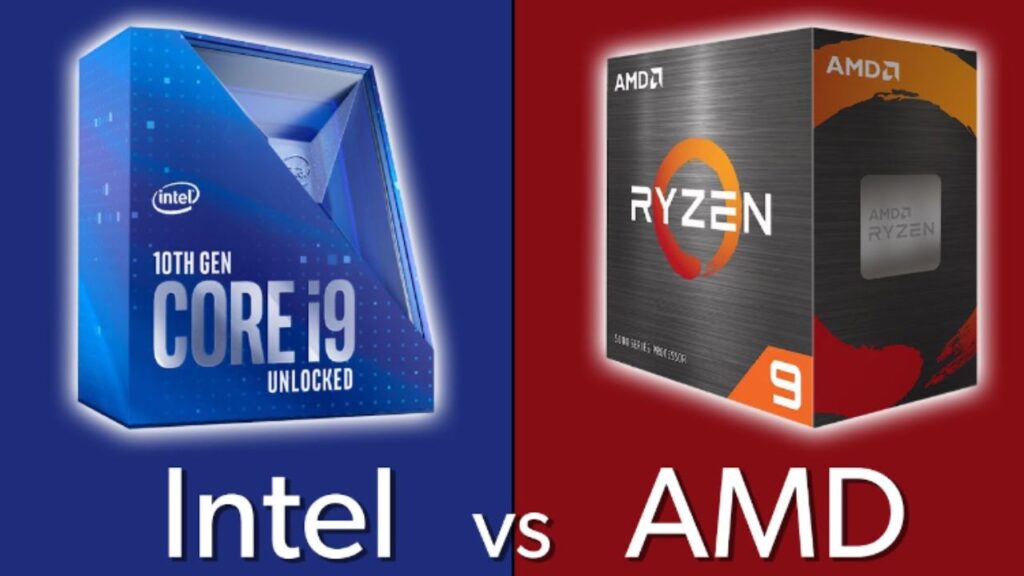In the dynamic world of computing, the ongoing rivalry between Intel and AMD for virtualization has significantly influenced the choices of users, especially when it comes to virtualization.
As we step into 2024, the question remains: which processor giant, Intel or AMD, offers superior performance for virtualization tasks?
In this blog post, we’ll discuss the strengths, weaknesses, and considerations that can guide your decision about choosing a processor for virtualization.
What is AMD virtualization?
AMD Virtualization, also known as AMD-V (AMD Virtualization Technology), is a hardware-based virtualization technology developed by Advanced Micro Devices (AMD).
It is designed to enhance the performance and efficiency of virtualization on AMD processors, making it easier to run multiple operating systems or applications on a single physical machine.
AMD Virtualization technology is integral for users who want to create and manage virtualized environments, whether for testing purposes, server consolidation, or running multiple operating systems on a single machine.
It contributes to the overall performance, security, and efficiency of virtualization tasks on AMD processors, providing a robust foundation for virtualized computing environments.
Key features and aspects of AMD Virtualization include:
- Hardware Acceleration
- Nested Page Tables
- Rapid Virtualization Indexing (RVI)
- Secure Virtual Machine (SVM)
- I/O Virtualization
- Compatibility with Hypervisors
- Migration and Live Migration Support
What does Intel virtualization do?
Virtualization solutions enable the concurrent operation of multiple operating systems (OSs) and applications within distinct partitions on a solitary computer.
Leveraging these capabilities, a single physical computer system can operate as multiple virtual systems simultaneously.
Understanding Virtualization:
Virtualization has become a cornerstone in modern computing, allowing users to run multiple operating systems or applications on a single physical machine.
The effectiveness of a processor in handling these virtualization tasks is crucial for ensuring smooth and efficient performance.
Intel’s Legacy in Virtualization:
As a longstanding player in the CPU market, Intel has established itself as a go-to choice for various computing needs, including virtualization.
Here are some key aspects where Intel shines in the virtualization arena:
- Single-Core Dominance: Intel processors have traditionally excelled in single-core performance. For virtualization scenarios where applications rely heavily on the performance of a single core, Intel’s architecture can offer a competitive edge.
- Established Ecosystem: Intel’s processors are part of a well-established ecosystem. This means compatibility is often less of an issue, making Intel a preferred choice for businesses with existing infrastructure built around Intel architecture.
AMD’s Resurgence with Ryzen and EPYC:
In recent years, AMD has staged a remarkable comeback with its Ryzen and EPYC processors, introducing architectural innovations that have positioned them as strong contenders for virtualization workloads:
- Multithreading Prowess: AMD processors, particularly those featuring simultaneous multithreading (SMT) technology, excel in multitasking scenarios. This is particularly advantageous for virtualized environments running multiple virtual machines (VMs) simultaneously.
- Cost-Effective Solutions: AMD processors often provide a cost-effective alternative to Intel, making them an attractive option for businesses or individuals looking to build virtualized systems without breaking the bank.
Decision-Making Considerations:
Choosing between Intel and AMD for virtualization hinges on various factors, and understanding your specific needs is paramount:
- Workload Type: If your virtualization tasks involve heavy multitasking and the concurrent execution of multiple threads, AMD processors with SMT may offer a cost-effective and powerful solution.
- Single-Core vs. Multithreaded Needs: Assess whether your virtualization workloads are more reliant on single-core performance (favoring Intel) or can benefit from the multithreading capabilities of AMD processors.
- Budget Constraints: Consider your budget, as AMD processors often provide compelling performance at a more affordable price point, making them an attractive option for cost-conscious users.
FAQ: Intel vs. AMD for Virtualization – Which is Better?
Which brand, Intel or AMD, is better for virtualization purposes?
The choice between Intel and AMD for virtualization depends on several factors, and both brands offer competitive solutions.
What does Intel offer for virtualization?
Intel provides a range of processors with features like Intel Virtualization Technology (VT-x) and Intel VT-x with Extended Page Tables (EPT). These technologies enhance hardware-based virtualization support, allowing for efficient execution of virtual machines.
What about AMD’s virtualization capabilities?
AMD’s virtualization technology, known as AMD-V, includes features like Nested Page Tables and Rapid Virtualization Indexing (RVI). AMD processors with SVM (Secure Virtual Machine) contribute to security in virtualized environments.
How does Intel perform in virtualization scenarios?
Intel processors are known for their strong single-core performance, making them suitable for scenarios where applications rely heavily on a single-core. They have an established ecosystem and are often chosen for compatibility and reliability.
What advantages does AMD bring to virtualization?
AMD processors, especially those with simultaneous multithreading (SMT) technology, excel in multitasking scenarios. They often provide cost-effective solutions, making them attractive for businesses with budget constraints.
Which brand is more cost-effective for virtualization?
AMD processors are often considered more cost-effective for virtualization, providing competitive performance at a more affordable price point compared to some Intel counterparts.
Does the choice between Intel and AMD depend on specific virtualization needs?
Yes, the decision depends on your specific use case. If your virtualization tasks involve heavy multitasking, AMD processors may offer a cost-effective solution. For scenarios where single-core performance is crucial, Intel processors could be a preferable choice.
Are both Intel and AMD processors compatible with popular hypervisors?
Yes, both Intel and AMD processors are compatible with popular hypervisors like VMware, Microsoft Hyper-V, and others. This ensures flexibility in choosing virtualization platforms that align with specific needs.
Conclusion:
In the ongoing debate of Intel vs. AMD for virtualization in 2024, both giants present compelling solutions. Your choice should align with your specific use case, preferences, and budget considerations.
Whether you opt for Intel’s established single-core dominance or AMD’s innovative multithreading prowess, both companies continue to push the boundaries of virtualization performance, providing users with robust options to meet their computing needs in this dynamic technological landscape. Comment here.

